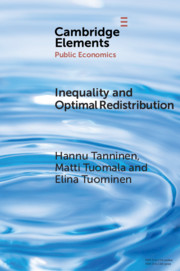Element contents
Inequality and Optimal Redistribution
Published online by Cambridge University Press: 14 March 2019
Summary
- Type
- Element
- Information
- Series: Elements in Public EconomicsOnline ISBN: 9781108567503Publisher: Cambridge University PressPrint publication: 28 March 2019
References
- 12
- Cited by



